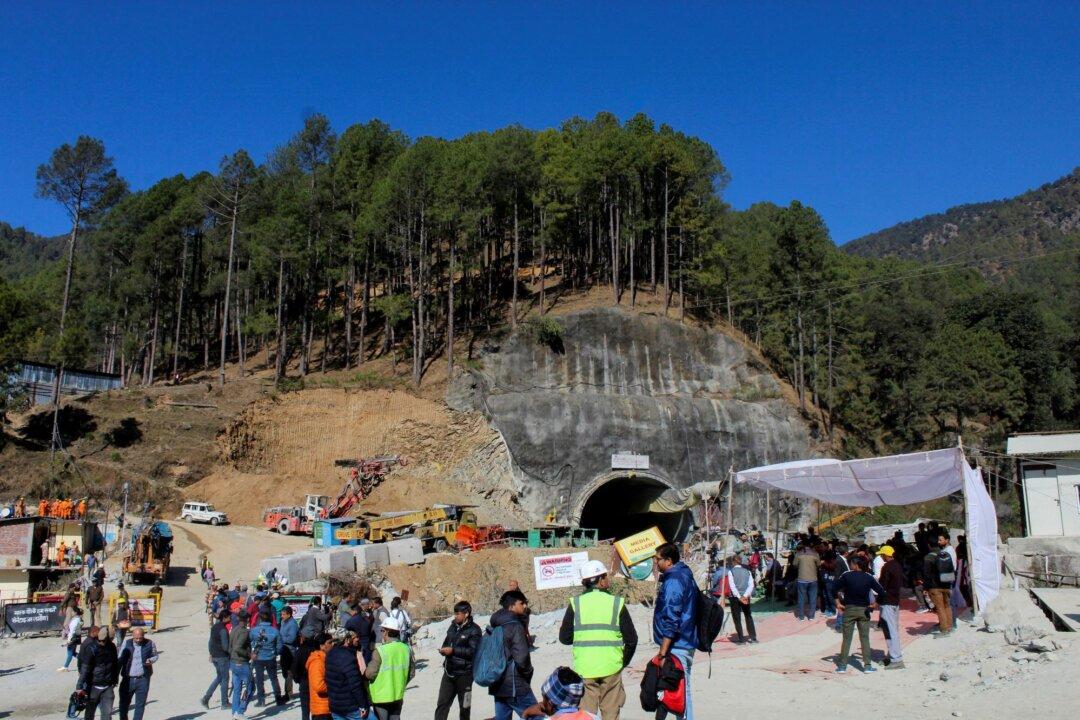SILKYARA, India—Rescuing 41 workers trapped in a highway tunnel in the Indian Himalayas for two weeks will take much longer than previously hoped as rescuers are switching to manual drilling following damage to machinery, officials said on Saturday.
The heavy drill brought in to break through nearly 60 meters of debris was damaged on Friday and was being pulled out entirely, government officials said, adding the last 10–15 metres would have to be broken with hand-held power tools.





